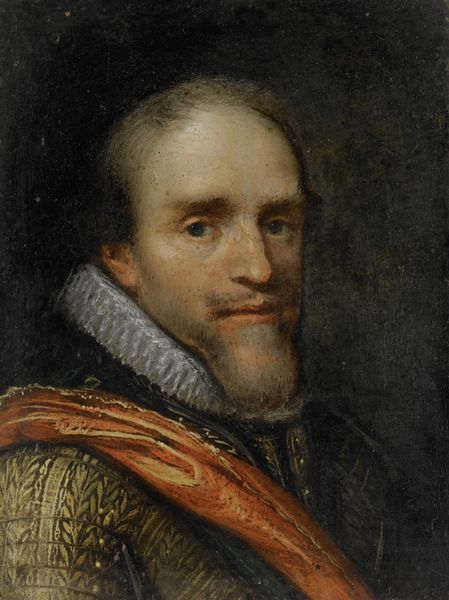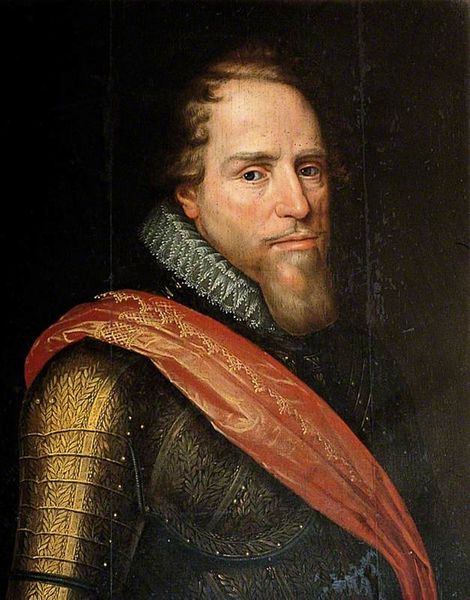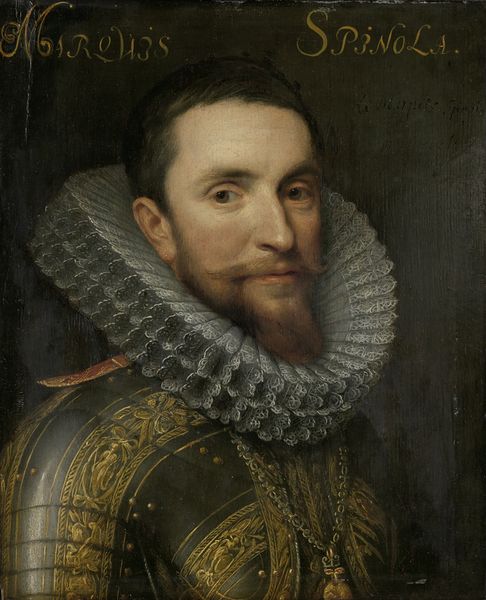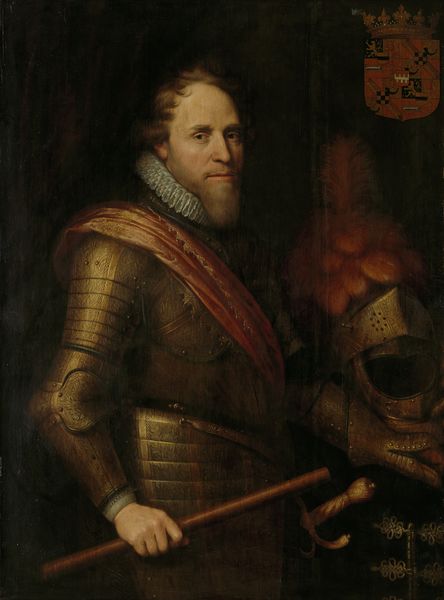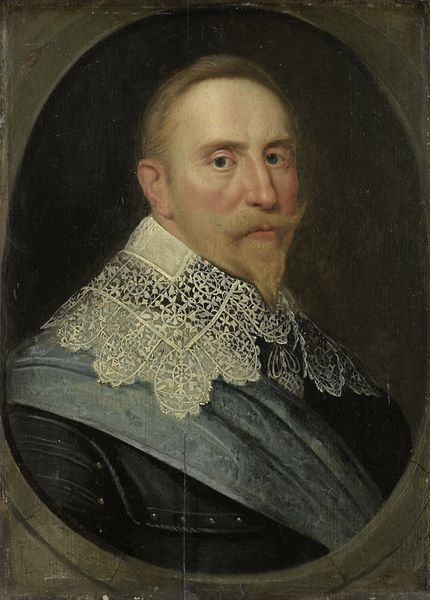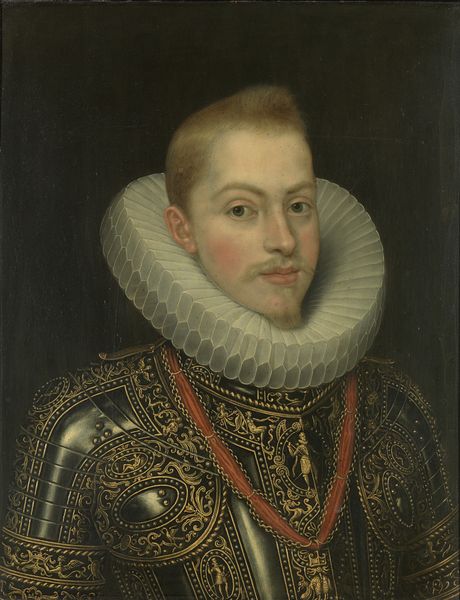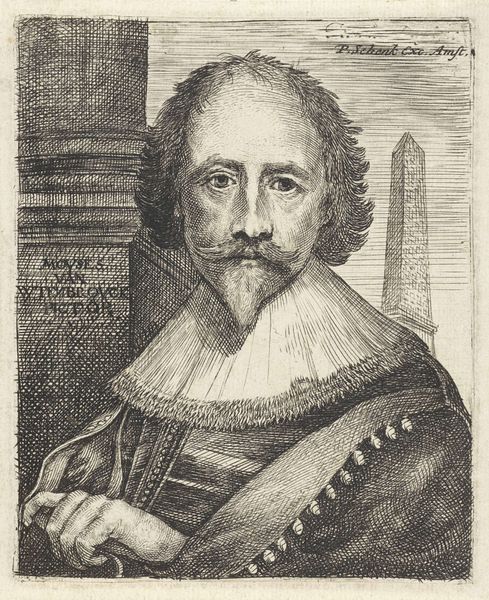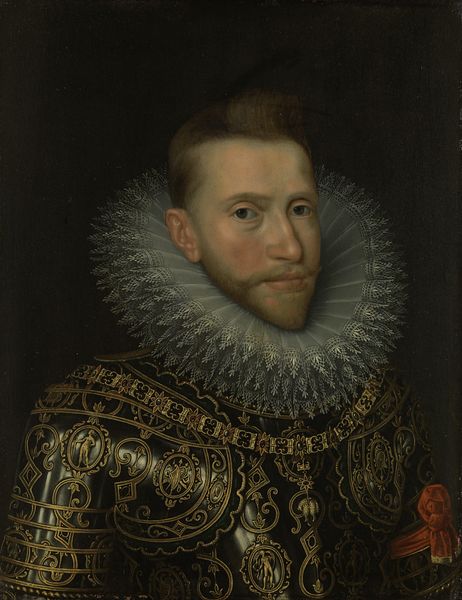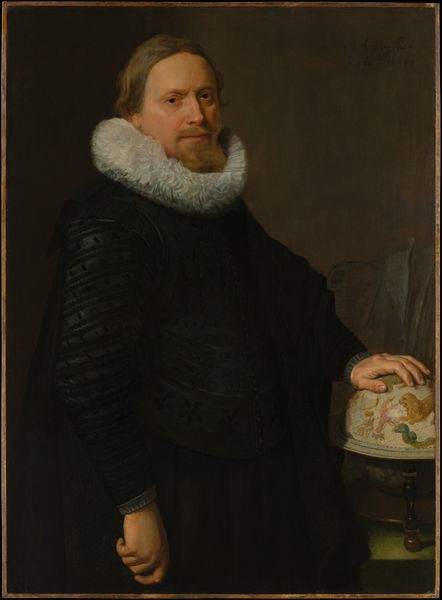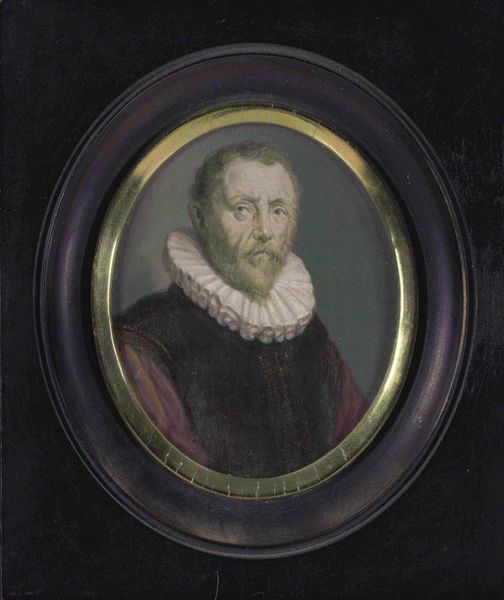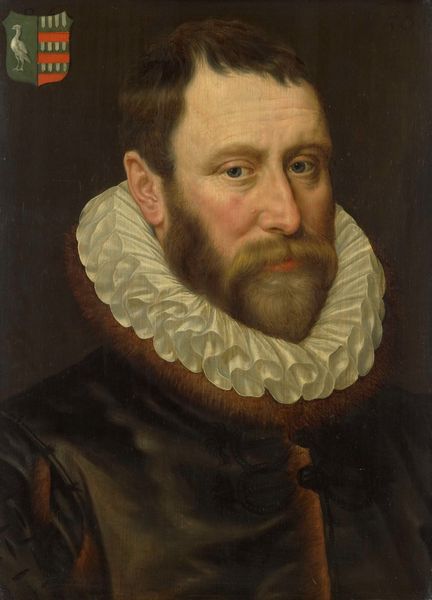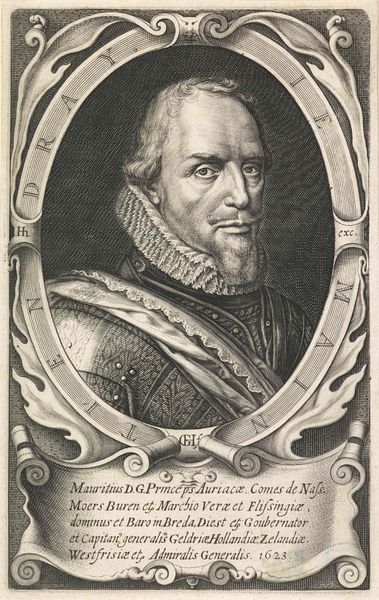
Portrait of Maurits (1567-1625), Prince of Orange c. 1609 - 1633
michieljanszvanmierevelt
Rijksmuseum
oil-paint
portrait
baroque
portrait image
oil-paint
Dimensions: support height 29.8 cm, support width 24.5 cm
Copyright: Rijks Museum: Open Domain
Curator: Here we have Michiel Jansz. van Mierevelt’s oil on panel, “Portrait of Maurits (1567-1625), Prince of Orange," likely created sometime between 1609 and 1633. What are your first thoughts? Editor: The somberness is striking. The dark background seems to swallow everything but the face and a shimmer of gilded armour. It projects a sense of heavy responsibility, wouldn't you say? Curator: Indeed. Note how Mierevelt uses light to model Maurits's face. The high collar frames the face drawing the eye immediately and providing textural contrast, as does the gold of the armour versus the face and dark backdrop. What strikes me is the slightly asymmetric face, rendering it realistically rather than ideally. Editor: That collar, in its rigidity, almost feels like a visual metaphor for the constraints of power. Maurits was, after all, Stadtholder during a tumultuous period in Dutch history, deeply embedded in religious and political conflicts. Did Mierevelt intend to evoke something of those tensions? Curator: The material handling definitely creates some internal tension. Observe how the textures interact and consider the overall impact of these stylistic choices. Semiotically, the gilded armour also makes the statement very clearly, no? Editor: Certainly. It signifies power, wealth, and military prowess - each component adding depth to his identity as perceived and crafted within the social and political theater. But the slight downward glance and set of the mouth suggest more than just stoic strength. Perhaps even doubt? Curator: A penetrating assessment! It speaks to the skillful crafting by Mierevelt to present an icon of power without falling into the trap of sterile idealization. Editor: It’s remarkable how the historical context seeps into our interpretation, doesn’t it? Thinking about the man and his time makes it more poignant. It moves beyond surface reading. Curator: Absolutely. Through structural components and surface textures the man takes form. It creates an incredible dance between the subject, the artist, and the world around them both. Editor: The subtleties of Baroque portraiture never cease to amaze me, the dance of context and art!
Comments
No comments
Be the first to comment and join the conversation on the ultimate creative platform.
